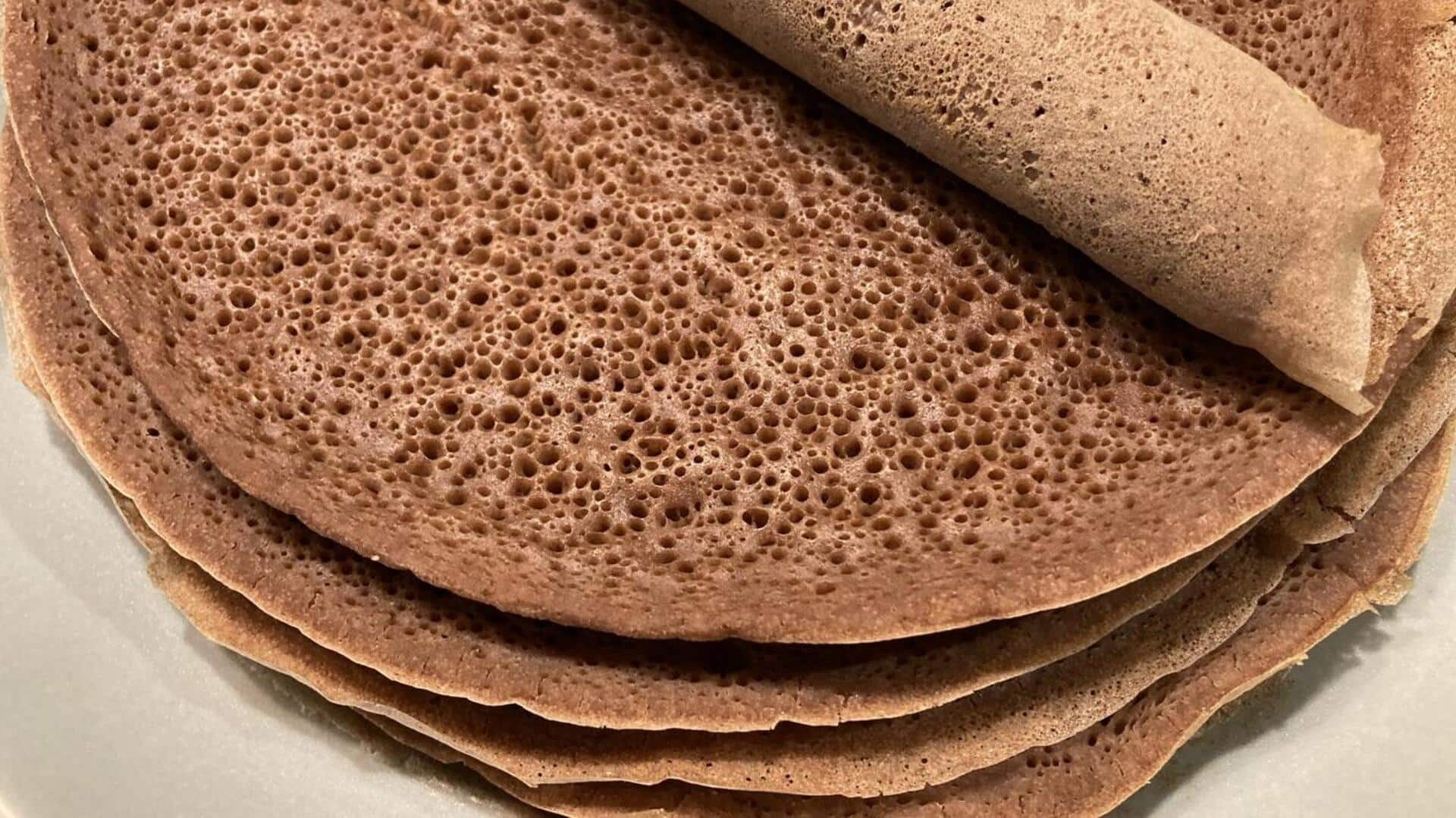
Ethiopia on your plate: Make authentic injera with this recipe
What's the story
Injera, a staple of Ethiopian cuisine, is a sourdough-risen flatbread with a unique, slightly spongy texture. Traditionally made from teff flour, this dish is deeply ingrained in Ethiopia's culinary culture, serving as both a dish and utensil at meals. It's enjoyed with various vegetarian stews and salads. With its rich history and cultural significance, preparing injera offers a delightful culinary adventure. Let's get cooking.
Ingredients list
Gather the following ingredients
To embark on this culinary journey, you'll need: two cups of teff flour (the traditional grain used in Ethiopia), three cups of water (adjust as needed for consistency), one-half teaspoon of salt, and one teaspoon of baking powder (to aid in fermentation if you're short on time). Ensure all ingredients are at room temperature to facilitate the fermentation process.
Step 1
Preparing the batter
Begin by mixing teff flour with water in a bowl. Whisk thoroughly to prevent lumps, aiming for pancake batter consistency. Adjust by adding either more water or flour as needed. Cover the bowl with a clean cloth and let it sit at room temperature for one to three days for fermentation. You'll know it's ready when bubbles form on the surface.
Step 2
Cooking injera
After fermentation, stir the salt and baking powder into the batter. Warm a nonstick pan on medium heat - oil isn't required due to injera's nonstick properties. Pour the batter to thinly cover the pan's bottom, tilting as needed for an even spread. Cook until holes form on its surface and the edges start lifting from the pan, taking about two to three minutes.
Step 3
Serving suggestions
Traditionally, injera is served with an array of vegetarian dishes placed directly on top of a large piece that covers an entire plate or tray. Common accompaniments include lentil stews (misir wot), vegetable curries (atakilt wat), and various salads. Tear off pieces of injera by hand and use them to scoop up these delicious toppings for an authentic Ethiopian dining experience.